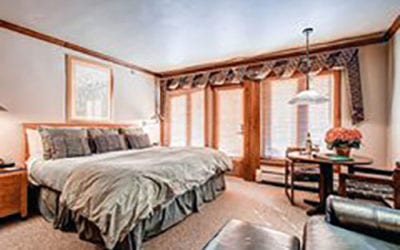 Two sets of Arab baths in Granada offer two different points of view of the Moorish Hammams. One is the ruin of the oldest public bath in the city. The other is a functioning recreation of an Arab bath in which visitors can wallow in the enfolding warmth and soothing sounds of the waters.
Two sets of Arab baths in Granada offer two different points of view of the Moorish Hammams. One is the ruin of the oldest public bath in the city. The other is a functioning recreation of an Arab bath in which visitors can wallow in the enfolding warmth and soothing sounds of the waters.
Hammam El Banuelo
Bathhouses in the Moorish world served far more than only as bathing establishments. These were places where deals were struck, partnerships explored and politics discussed. Here, men had their haircut and got shaves as well as massages between making the business deal and exchanging wives.
 Women, when allowed to leave their homes, spent time here together, protected from the outside world. Women were only allowed outside of their homes to visit the cemetery once a week to pray at the graves of their relatives and to go the baths twice a month. The baths were also the traditional place for a bride-to-be’s bachelorette party, so to speak. The baths were strictly segregated and used at different times by men and women.
Women, when allowed to leave their homes, spent time here together, protected from the outside world. Women were only allowed outside of their homes to visit the cemetery once a week to pray at the graves of their relatives and to go the baths twice a month. The baths were also the traditional place for a bride-to-be’s bachelorette party, so to speak. The baths were strictly segregated and used at different times by men and women.
Just down the Paseo de los Tristes that runs along the River Darro flowing from under Plaza Nueva stand the thousand-year-old remains of El Banuelo. Tucked behind the door of an unimposing, easily missed building, these baths were once part of the Mosque of the Walnut Tree (Mesquita del Nogal). Considered one of the best remaining examples of the Moorish bathing experience, these crumbing walls provide an evocative peek into Islamic life.
Only open from 10 a.m. until 2 p.m. Tuesday through Saturday, entrance to these bath ruins is free. A curious gatekeeper sitting behind a barred window asks, “Where are you from?” He will then duly note it on a crinkled ledger. I assume these statistics will help with the marketing of Granada. If you have any facility with Spanish ask him for a brochure about the baths. It helps identify the different rooms of the baths.
The ruins of the Moorish baths in Grenada have a remarkable resemblance to the baths found in Pompeii. It seems that little changed between 79 AD and the 11th Century. These baths, attached to a mosque served to not only cleanse the body, but to help purify the soul. Baths were a symbol and form of regeneration referred to even in the Koran.
 Stone archways and columns grace the baths and, above, barrel roofs have small octagonal and star-shaped cutouts that provide the only light today (perhaps there were oil lamps back in the day) and a system to ventilate the bathing rooms as well with glass insets that could be rotated or removed.
Stone archways and columns grace the baths and, above, barrel roofs have small octagonal and star-shaped cutouts that provide the only light today (perhaps there were oil lamps back in the day) and a system to ventilate the bathing rooms as well with glass insets that could be rotated or removed.
These geometric light holes were used because the walls of the baths were constructed extra thick to provide maximum insulation. These outlets not only provided light, but also reduced the weight of the thick ceilings. As one walks through the baths vestiges of the clay and pottery piping that ran through the walls can still be seen.
Imagining the different rooms and different temperatures within the baths as one wanders through these rooms is easy, however, one should also try to imagine the constant sound of tumbling waters in fountains and flowing pools. That sound was considered as relaxing as the warm waters for Moorish bathers.
The cold room (Al-bayt al maslaj) was used for changing. Niches in the walls were used to store clothing.
The waiting room (Al-bayt al barid) was where bathers received their towels and wooden sandals that would protect them from the heated floors in the hotter rooms.
The warm room (or central room, Al-bayt al-wastani) was where massage tables may have been set up and where much of the social life was centered. Arched galleries on either side of the warm room provided more privacy for intimate affairs.
To the far side of the warm room was the hot room (Al-bayt al-sajun) where fires under the floor heated not only the waters but the floor as well. Some believe that the hot room and boiling water also provided a steam bath similar to what we call a Turkish bath today.
Visitors will notice that there are no deep pools where bathers could swim or immerse themselves, rather water was scooped from the shallow pools and splashed on their bodies.
 Hammam Banos Arabes
Hammam Banos Arabes
For a step into fantasy, time spent in the Banos Arabes is worth the time and money. Surrounded by stunning Moorish luxury and décor in every corner of the Alhambra and here and there in the Albayzin, it is nice to have a chance to experience what some of that hedonistic life must have been life.
These baths are a recreation of the Moorish experience. A 90-minute bath will cost Euros 17 and an additional Euros 7 for a 15-minute massage. Entrance is limited to no more than 16 bathers at a time and reservations are scheduled every two hours during the day from 10 a.m. until midnight. Call 958-229-978 (for mobile users call 902-409-902). Reservations can also be made at www.hammamspan.com/Granada.
After making final payments, bathers will be given a towel. They must bring their own swimsuit. Swimsuits may also be purchased for Euros 12 at the office. A changing room provides a secure locker for clothes and valuables.
 Stepping through the door of the changing room into the caverns of the baths banishes the outside world. The barrel ceiling, graceful arches and delicate columns evoke a different world. The sounds of water falling from dozens of fountains, pouring into pools from spouts and curling down drains fills the space erasing the traffic and bustle of the outside. Aromatherapy candles flicker in tiny niches, lighting the repetitive geometric Moorish décor and intricate tile work. Long warm stone benches and chairs beckon and the pools promise warm relaxation.
Stepping through the door of the changing room into the caverns of the baths banishes the outside world. The barrel ceiling, graceful arches and delicate columns evoke a different world. The sounds of water falling from dozens of fountains, pouring into pools from spouts and curling down drains fills the space erasing the traffic and bustle of the outside. Aromatherapy candles flicker in tiny niches, lighting the repetitive geometric Moorish décor and intricate tile work. Long warm stone benches and chairs beckon and the pools promise warm relaxation.
Enter through the tearoom both a place to allow some meditation prior to beginning the bathing processes and the final room where visitors can relax with warm tea. The cold room with a cool pool comes next. Some choose to bypass the chilly start, but many leaving use the cooler waters to bring themselves back to the temperatures of the outside world.
Then bathers move to the warm pool that is about 25 feet long and 10 feet wide. A walk down three wide stairs allows one to slip comfortably into the warm waters. The next bath station is the hot pool also about the same size where the warmer waters will relax any tourist after a long flight or a full day in the Alhambra. Finally, a tucked-away steam room provides total relaxation.
Photos:
Moorish Bath Ceiling (Leocha)
Moorish Bath Dressing Room (Leocha)
Alhambra Baths
Moorish Bath Central Room (Leocha)
Hammam Banos Arabe cold room
Hammam Banos Arabe warm pool

Charlie Leocha is the President of Travelers United. He has been working in Washington, DC, for the past 14 years with Congress, the Department of Transportation, and industry stakeholders on travel issues. He was the first consumer representative to the Advisory Committee for Aviation Consumer Protections appointed by the Secretary of Transportation from 2012 through 2018.



